Issue of the Week: Environment


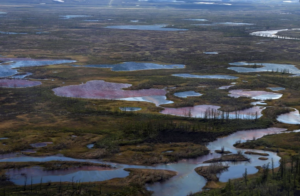
Norilsk in the Russian Arctic, one of the most polluted places on Earth, NBC News, 11.28.21
“Until the bulk of the population of our planet comes to understand the reasonable consumption of any resources … we will not achieve either economic growth or an environmentally friendly planet. We just simply kill our children and leave them a trash heap.”
–Vasily Ryabinin
That’s the last line of a lengthy report the day before yesterday from NBC News based on an article from Inside Climate News.
One of those lines that get your attention if anything will, as we so often say.
We’d add that the population “understanding” the reasonable consumption of resources includes, centrally, systems and policies that consider the impact of the human population itself, providing economic equality and security, basic needs and basic rights for all in the human family, and all the factors that go into creating and maintaining a healthy, sustainable planet.
Here we focus on how much environmental damage can be caused by just one company in one place on which the fate of the earth may rest.
The following story has not been widely known. It came in view last year with the worst oil spill in Arctic history. But in the context we have described for years now, attention to a story like this lasted about as long as a blink of the eye–for those who saw it all.
Still, it is one of those you can’t make it up kind of stories.
The company, Norilsk Nickel, says it wants to be part of the EV future. Its a story that reminds that the EV solution to carbon emissions from cars is far from simple or clear. But that’s another story to be explored whole.
For this story, it mainly provides an ironic context.
Here’s an excerpt:
Built as a resource colony by prisoners in the Soviet Gulag, Norilsk outlasted communism, embraced capitalism, and it now aims to ramp up production to sell the metals needed for electric vehicle batteries and the clean energy economy. Norilsk Nickel is the world’s leading producer of the high-purity Class 1 nickel that electric vehicle industry leaders like Tesla CEO Elon Musk are seeking. The company’s ambitions coincide with those of Russian President Vladimir Putin for greater development in the Far North, which he maintains can be accomplished sustainably.
But Norilsk Nickel has undermined its own vision for the future by spoiling a priceless environment, with implications for the entire planet. The company’s pollution has carved a barren landscape of dead and dying trees out of the taiga, or boreal forest, one of the world’s largest carbon sinks. Its wastewater has turned glacial rivers red. Its smokestacks belch out the worst sulfur dioxide pollution in the world. And last year, a corroded tank burst and released 6.5 million gallons of diesel fuel into waters that flow to the Kara Sea. It was the largest oil spill in Arctic history. Although Norilsk Nickel maintains that no diesel fuel made it to the Arctic Ocean, the Russian government’s fisheries science agency told Inside Climate News that its testing showed that the contamination had reached that far.
Here’s the whole story:
“How Norilsk, in the Russian Arctic, became one of the most polluted places on Earth”
A smelting company has poisoned rivers, killed off forests and belched out more sulfur dioxide than active volcanoes. Now it wants to produce more metal for the “green economy.”
By
This article is part of “The Fifth Crime,” a series on ecocide published in partnership with Inside Climate News, a nonprofit, independent news outlet that covers climate, energy and the environment, and Undark Magazine, a nonprofit, editorially independent digital magazine exploring the intersection of science and society.
It was 2 a.m. and the sun was shining, as it does day and night in mid-July in Norilsk, a Siberian city 200 miles north of the Arctic Circle.
Igor Klyushin went to the bank of the river where he used to fish with his father for grayling, a dorsal-finned beauty known for its graceful leaps above the surface. “A very merry fish,” Klyushin recalled. “It enjoys cold and clean, clean water.”
He doubted grayling would be there that night. In any event, authorities had long warned that it was unsafe to fish for them in the Daldykan River.
And besides, he wasn’t there to fish. He began to record images of the clay-colored muck flowing downriver from one of the largest metal mining and smelting complexes in the world. The discolored water represented “the latest environmental crime of Norilsk Nickel,” Klyushin said in the video he posted on “Norilchane” — or “Citizens of Norilsk” — the YouTube channel he helps moderate.The channel and its Facebook group, with about 8,300 members, have become gathering places for distressed residents of Norilsk, the northernmost city in the world. The city of 176,000 has long beenrecognized by environmentalists — and even by the Russian government — as one of the most polluted places on Earth, because of one business: Norilsk Nickel, the world’s biggest producer of palladium and high-grade nickel and a top producer of platinum, cobalt and copper.
Built as a resource colony by prisoners in the Soviet Gulag, Norilsk outlasted communism, embraced capitalism, and it now aims to ramp up production to sell the metals needed for electric vehicle batteries and the clean energy economy. Norilsk Nickel is the world’s leading producer of the high-purity Class 1 nickel that electric vehicle industry leaders like Tesla CEO Elon Musk are seeking. The company’s ambitions coincide with those of Russian President Vladimir Putin for greater development in the Far North, which he maintains can be accomplished sustainably.
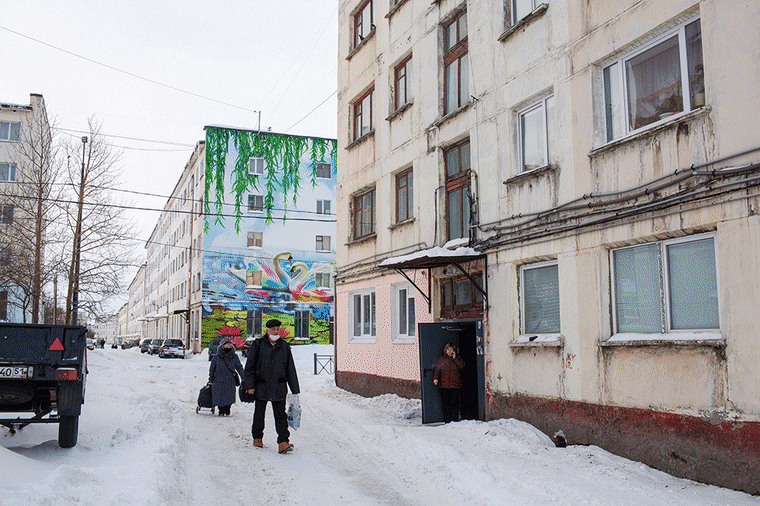
But Norilsk Nickel has undermined its own vision for the future by spoiling a priceless environment, with implications for the entire planet. The company’s pollution has carved a barren landscape of dead and dying trees out of the taiga, or boreal forest, one of the world’s largest carbon sinks. Its wastewater has turned glacial rivers red. Its smokestacks belch out the worst sulfur dioxide pollution in the world. And last year, a corroded tank burst and released 6.5 million gallons of diesel fuel into waters that flow to the Kara Sea. It was the largest oil spill in Arctic history. Although Norilsk Nickel maintains that no diesel fuel made it to the Arctic Ocean, the Russian government’s fisheries science agency told Inside Climate News that its testing showed that the contamination had reached that far.
In September, Norilsk Nickel agreed to negotiate the settlement of an $800 million lawsuit that the federal fisheries agency, known as Rosrybolovstvo, filed against the company this summer over the damage to the region’s aquatic resources.
Norilsk is an example of the kind of systematic and long-term devastation that has animated a global movement to make destruction of nature an international crime. The campaign aims to treat “ecocide” in the same way as genocide or crimes against humanity, offenses prosecutable by the Hague-based International Criminal Court. The ecocide campaign has drawn attention to the failure of national laws to halt severe and widespread or long-term damage that has international consequences.
Norilsk is grappling with such damage, both as part of a region that is especially vulnerable to climate change and as a city reliant on an industry that has poisoned its land and water.
Norilsk Nickel maintains that it can rehabilitate its environment. It paid a $2 billion fine for last year’s diesel spill, the largest environmental penalty in the country’s history, and it has pledged to spend more than $5 billion on both pollution control and economic and social revitalization throughout its territory of Krasnoyarsk Krai.
“We do acknowledge that there are legacy issues relating to our business,” a company spokesman said in written responses to questions from Inside Climate News, referring to the problems left over from the Soviet era. “We are implementing far-reaching measures to address them.”
Local government officials are enthusiastic about Norilsk Nickel’s program. The city and the territory plan to build a hospital, renovate housing and even create an Arctic Museum of Modern Art. Krasnoyarsk Krai Gov. Alexander Uss has proposed making Norilsk the official capital of the Russian Arctic.
But residents like Klyushin are skeptical, given the pollution they’ve seen even after the company paid its fine.
“When I came that night to see the Daldykan, my heart really sank, and it was broken,” Klyushin said, speaking by phone through an interpreter two weeks after he took video of the discolored water in July. “The river was red with pulp, and the chemical smell is still in my lungs.”
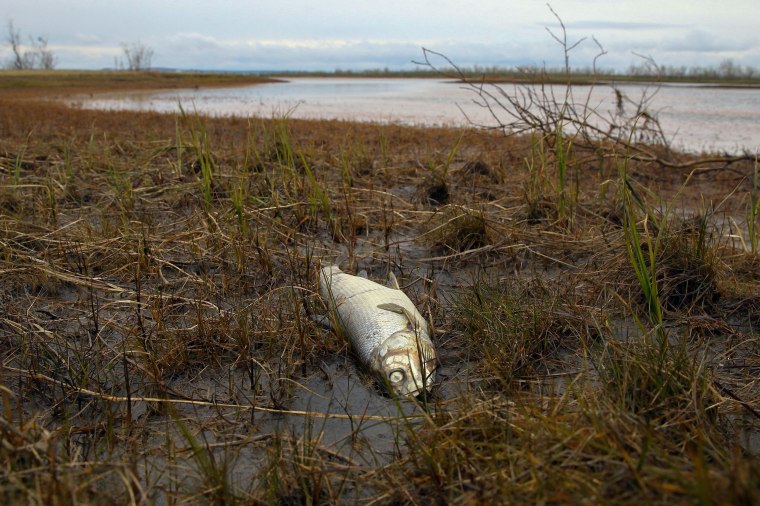
Dying forests and pollution visible from space
The story of Norilsk’s pollution is written in the trees: 5.9 million acres of dead and dying boreal forest downwind from the Norilsk Nickel compound — a scar larger than New Jersey, slashed into the largest forested region on Earth.
In tree ring samples, scientists have pinpointed the great rush of sulfur dioxide pollution that began in 1942, when the first nickel smelter geared up to meet the Soviet Union’s need for stainless steel during World War II. And the tree rings have shown how the rate of forest deaths here jumped in the 1960s, from 5 percent annually to 30 percent annually at one research site, said a study that researchers from Siberian Federal University and the University of Cambridge published last year. The discovery at that time of huge new ore reserves gave Norilsk Nickel “a new lease on life,” the company noted in its official history.
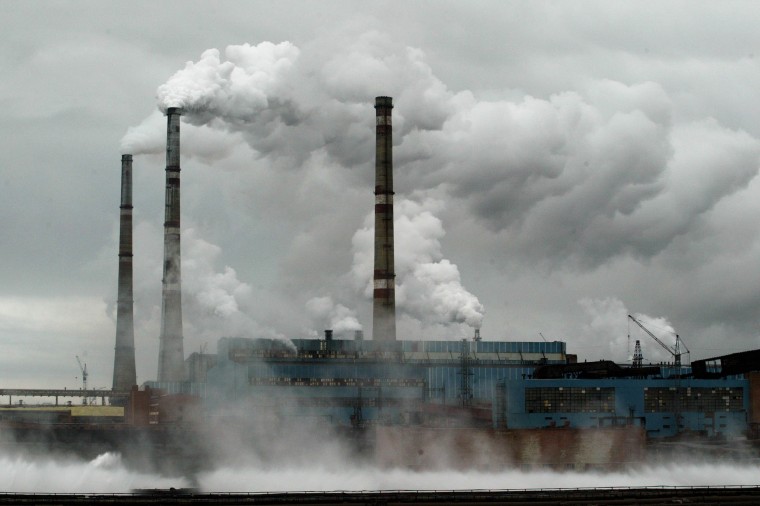
By the early 1980s, all larch trees within 40 miles east of Norilsk were dead.
Satellite readings show that no other human enterprise — no power plant, no oil field, no other smelter complex — generates as much sulfur dioxide pollution as Norilsk Nickel. In fact, the only entities on Earth that rival its sulfur emissions are erupting volcanoes, according to a monitoring project led by scientists at NASA and Environment Canada. At 1.9 million tons of sulfur dioxide emissions annually, Norilsk produces as much sulfur pollution as the entire U.S. — all concentrated in a city the size of Eugene, Oregon.
“You cannot breathe there,” Valeriya “Lera” Bolgova, a leader of the Nganasan people, one of five Indigenous tribes of the Taimyr peninsula, said in an interview. The region’s first people have been unique witnesses to Norilsk Nickel’s indelible imprint on the environment, because fish and reindeer meat are still central to their diets.
“When the pollution proceeds, and proceeds as intensively as it is nowadays, both the fish and the animals start looking for a cleaner environment,” Bolgova said.

Researchers from Siberian Federal University affirmed that the reindeer patterns have dramatically changed on Taimyr. They found the average stay of the reindeer at their traditional summer calving and feeding place to be just 63 days, a third of what it was in the 1960s.
As for human health, lung cancer mortality is 1.2 to 2.5 times higher in Norilsk than in other Russian cities, and deaths from cardiovascular disease and infectious diseases also are elevated, according to the latest research. Such elevated rates are difficult to tie to a single source, and their cause hasn’t yet been established.
It is difficult to study life expectancy in Norilsk because so many people retire early and move to warmer climates, where their health outcomes aren’t captured in the city’s statistics.
“They hope to start getting this higher pension and then go to the mainland and live this beautiful life,” said Klyushin, whose father and uncle were among those who left. His father died a few years ago at age 61, and his uncle died before he was 60.
A ‘mountain river’ of diesel fuel
Klyushin and other local environmental activists agitated for years for Rosprirodnadzor, the Russian environmental protection agency, to establish an office in Norilsk.
They succeeded early last year, and the job of chief deputy went to Vasily Ryabinin, then 39, a chemist, who had previously worked at Norilsk Nickel but left after his beloved mentor at the company died of cancer, he said in an interview with Inside Climate News.
Yet the warm, spring day when 6.5 million gallons of diesel fuel spilled from the Norilsk Nickel complex into the Daldykan River marked both the beginning and the end of Ryabinin’s career as an environmental enforcer for the Russian government.
In the days leading up to May 29, 2020, the temperature in the region had risen 18 degrees Fahrenheit above normal, according toone scientific study. Permafrost had begun to give way under a corroded fuel tank at Norilsk Nickel’s power plant that Russian government safety inspectors had deemed unstable two years earlier and that the company had never fixed.
Ryabinin received a phone call from his boss, who had been denied entry to investigate at the nickel plant, saying red pollution had been spotted in the river. Ryabinin joined him outside the plant, but they were turned away by security, backed up by police.
Ryabinin, who is both a mountaineer and a photographer, took his hiking boots and a camera and walked 2 kilometers with his boss to a nearby bridge, where they could see “an absolute mountain river” of diesel fuel spilling into the waterways, Ryabinin said. “My boss was even afraid to actually smoke, because the smell was so strong it was possible these vapors could ignite some kind of explosion,” he added.
Ryabinin told his story in a 45-minute video posted later on the Norilchane YouTube channel. His broadcast and photographs were the first account that reached the outside world about the largest known oil spill in the Arctic. If it had occurred in the U.S., it would have ranked among the country’s top 10 spills, more than half the size of the Exxon Valdez spill and six times larger than the 2010 pipeline spill of tar sands oil in the Kalamazoo River.

Top Rosprirodnadzor officials flew in from Moscow. The company deployed containment booms and hundreds of workers to clean up. But Ryabinin felt it was an unwinnable race with the river current. He pressed to sample the water downstream in Lake Pyasino for contamination, but his superiors told him no transportation was available. Six days later the head of Rosprirodnadzor declared that no oil had reached the lake, which connects to the Arctic Ocean. Norilsk Nickel said the same.
Ryabinin, feeling he was being prevented from determining the true extent of damage to the environment, turned in his resignation.
One of Russia’s most prominent ecologists, Evgeny Shvarts of the Russian Academy of Sciences Institute for Geography in Moscow, told Inside Climate News he is convinced from long experience as an environmental advocate in Russia that people can’t rely on the government for environmental protection.
Shvarts has been a member of Norilsk Nickel’s board of directors since 2019, one of the independent directors the company is required to have because it is traded on the London Stock Exchange. Shvarts holds no stock in Norilsk Nickel and isn’t in the corporate chain of command under the majority shareholder, the oligarch Vladimir Potanin.
Shvarts believes independent directors and other requirements of the public markets are especially important in Russia, where, he said, the government doesn’t have the tools necessary to implement environmental laws. “It is a very naive approach to think that the state always represents the public interest,” he said.
After Klyushin saw pollution in the Daldykan River again in July, he notified the regulatory agencies. The Ministry of Natural Resources responded with a letter that Klyushin shared with Inside Climate News. In it, the ministry detailed Norilsk Nickel’s reported discharges into waterways for the first quarter of 2021: cobalt, 32,318 tons, or four times the legal limit; iron, 3,998 tons, or 45 times the legal limit; and nickel, 989 tons, or 100 times the legal limit. The discharges exceeded the “normative permissible standards,” the ministry said, but they were allowed under Norilsk Nickel’s permit, signed by Rosprirodnadzor, the environmental agency. The agency declined repeated requests to respond to questions for this article.
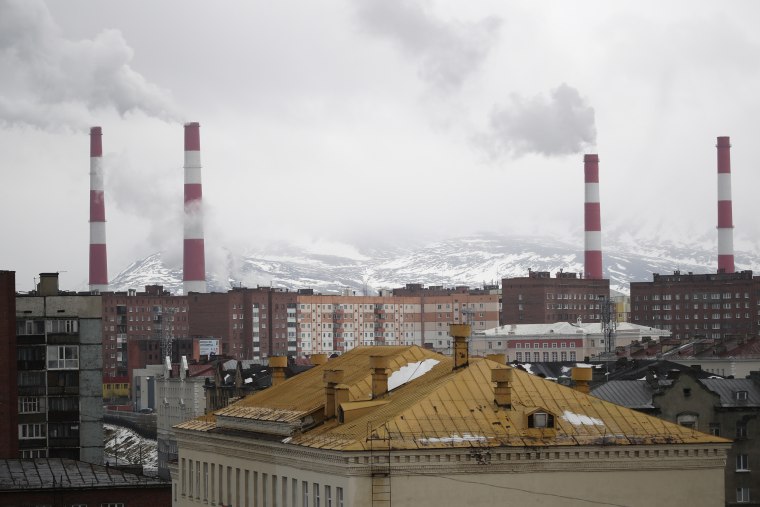
“Nornickel’s factories operate under strict environmental restrictions and a set of established permits, which are prescribed in accordance with project documentation with an assessment of permissible impact standards,” Norilsk Nickel’s spokesman said about the discharges.
Ryabinin said he wasn’t surprised about the permits or the ministry’s response.
“In Russian, we have a saying: ‘It’s like throwing dried peas against the wall,’” he said. “The peas will just come right back to you. They won’t get to somebody else, to someone who is guilty of building this wall.”
Putin plays ‘the good czar’
Putin reacted sharply to news of the diesel spill last year, which came only weeks after he unveiled a new strategic plan for the Arctic, a vision of resource development and environmental protection going hand in hand.
“Why did the authorities find out about this only two days later?” Putin asked in a video conference call with regional and company officials. “Are we going to learn about emergencies from social networks?”

Fiona Hill, a senior fellow at the Brookings Institution and the author of books about Putin and about the long-lasting costs of the Soviet Union’s intensive development of Siberia, said about Putin, “This is him playing the role of the good czar, who has a direct connection with the people.”
But, she said, Putin doubtless is also aware of how environmental disaster can breed activism and awaken dissatisfaction with the government. After the deadly 1986 Chernobyl disaster, protests in Ukraine, Belarus and Estonia morphed into a full-fledged independence movement that helped bring about the Soviet Union’s collapse.
In the weeks after the Norilsk Nickel spill, five people were arrested or charged with criminal negligence, including the power plant’s director and chief engineer and Norilsk’s mayor at the time.
The London-based consulting firm Environmental Resources Management, which the Norilsk Nickel board hired to investigate the accident, found that it was caused by a confluence of a changing environment, carelessness and neglect. In February, a Russian court ruled that the company should pay a fine of 146 billion rubles, or $2 billion.
“We learned this lesson well,” Potanin said in a statement after the verdict. “We are carrying out the instructions of the President to eliminate the consequences of the accident and to restore the ecosystem.”
Norilsk Nickel has maintained that the cleanup effort collected more than 90 percent of the leaked fuel — if true, an extraordinary recovery rate. For oil spills in marine environments, the average recovery rate is 8 percent to 10 percent, and on rivers, 50 percent would be considered high, according to experts at the U.S. National Oceanic and Atmospheric Administration and the Oil Spill Recovery Institute at Cordova, Alaska.
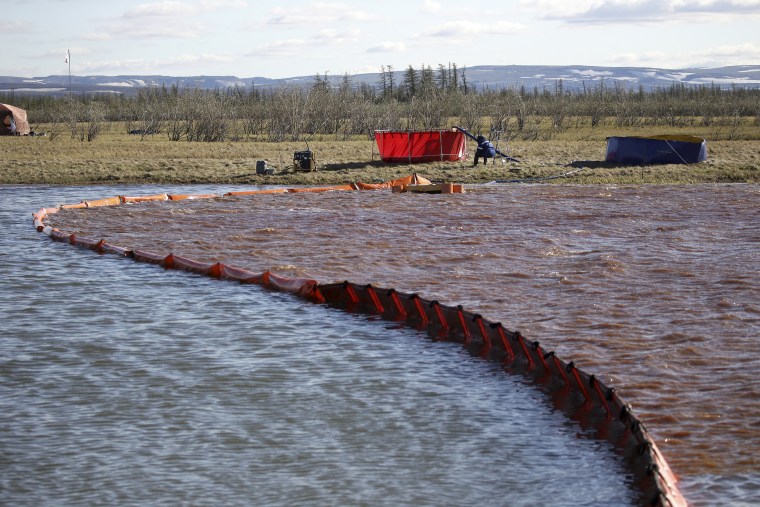
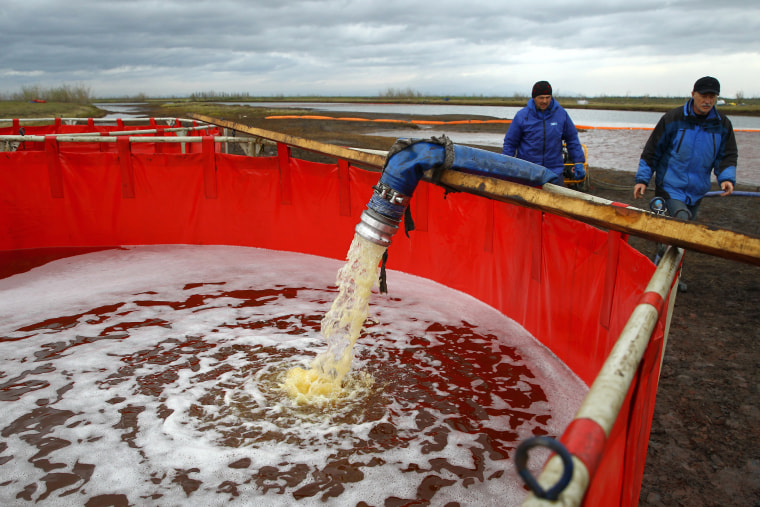
Russian scientists determined that diesel fuel from the spill did reach Pyasino Lake and beyond. Contamination was found in bottom sediment in the lake and the entire 900-kilometer length of the adjoining Pyasino River, including at its mouth in the Arctic Ocean’s Kara Sea, said Vyacheslav Bizikov, the deputy director of the Russian government’s All-Russian Research Institute of Fisheries and Oceanography in Moscow, in an interview with Inside Climate News.
Bizikov led the expedition of scientists, who lived on boats for 17 days sampling water, sediment and fish. The researchers found both diesel fuel and heavy metal contamination in the liver and muscles of fish they tested, and they warned local authorities and Indigenous communities that the fish weren’t safe to eat, he said.
The findings became the basis of the lawsuit the Russian fisheries agency filed against Norilsk Nickel in July. The company and the agency are working out an agreement on how to further study the damage, restore the environment and replenish the fish, Bizikov said.
“We can restore and recover the ecosystems and water ecosystems if we do it right,” Bizikov said. “As I see it, it’s not a matter of one day or one year. If there will be no more accidents, we will manage to fix it. It’s difficult to say when, but in 10 years, maybe we will see the definite results.”
New pressures for change are building on Norilsk Nickel from the outside.
Electric vehicle batteries, which rely on nickel for energy density and storage, are a major growth opportunity for the company. Russia is one of the few places that have the sulfur-rich ore that readily yields the very pure-grade Class 1 nickel needed, a resource base that has made Norilsk Nickel the world’s leading producer.
Musk of Tesla has said that he has plenty of business to offer but that he wants to partner with companies that engage in sustainable practices. “Tesla will give you a giant contract for a long period of time if you mine nickel efficiently and in an environmentally sensitive way,” he said on a company earnings call last year.
Potanin has made clear his ambition to compete in this market, having announced that Norilsk Nickel will increase production of “green economy” metals by 30 percent to 40 percent by 2030.
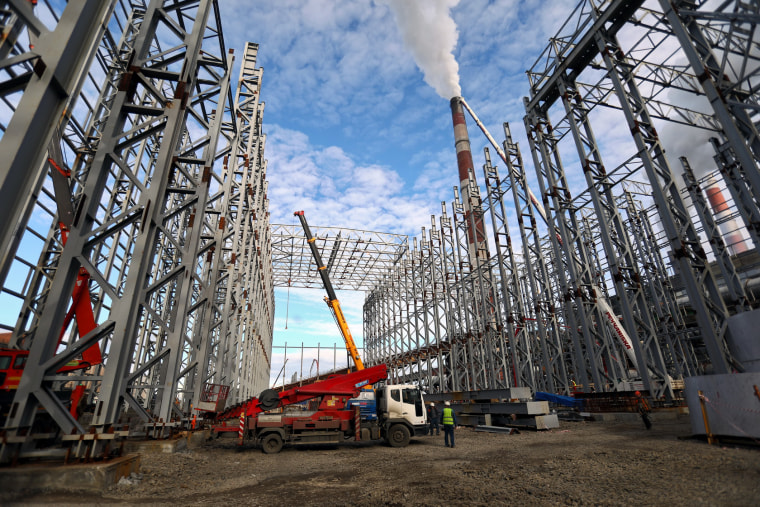
‘We kill our children and leave them a trash heap’
Norilsk Nickel, pledging to cut sulfur dioxide emissions by 90 percent by 2025, has said it will spend at least $4.1 billion on a project called Sulphur Programme 2.0.
“In my opinion, the implementation of the project will fundamentally change the ecological situation in our city,” Norilsk’s current mayor, Dmitry Kasarev, who previously worked for Norilsk Nickel, said in written responses to questions from Inside Climate News. “Our city should breathe a new breath in terms of ecology.”
Shvarts, who helped Norilsk Nickel develop its new environmental and climate strategy, said he supports the company’s striving to be part of the green economy. “We need to make every week, every month, a few new steps ahead to be a more transparent, more open, more environmentally responsible company,” he said.
Klyushin, however, won’t wait for that day to come. He has vowed to leave Norilsk soon and not return.
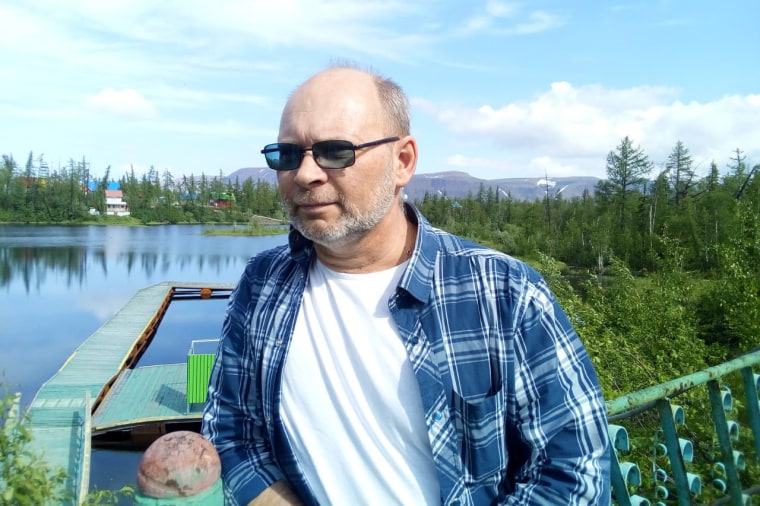
He worries about his friend Ryabinin, who has four children and hasn’t had a full-time job since he quit Rosprirodnadzor.
“If it were not for Vasily who started this, who discovered this, they would have avoided responsibility. This is clear,” Klyushin said.
Ryabinin said that since he quit the Russian environmental protection agency, he has been working as a freelance photographer and focusing on his children. He would like to take them to a place with more opportunity — and, of course, less pollution. But for now the family has no plans to move. His wife still works for Norilsk Nickel.
The experience of fighting the company changed him, Ryabinin said. The problem, he said, isn’t one company but consumption without any thought of where the raw material comes from or the need to use less.
“Until the bulk of the population of our planet comes to understand the reasonable consumption of any resources,” he said, “we will not achieve either economic growth or an environmentally friendly planet. We just simply kill our children and leave them a trash heap.”
Ludmila Mekertycheva in Moscow contributed to this report.